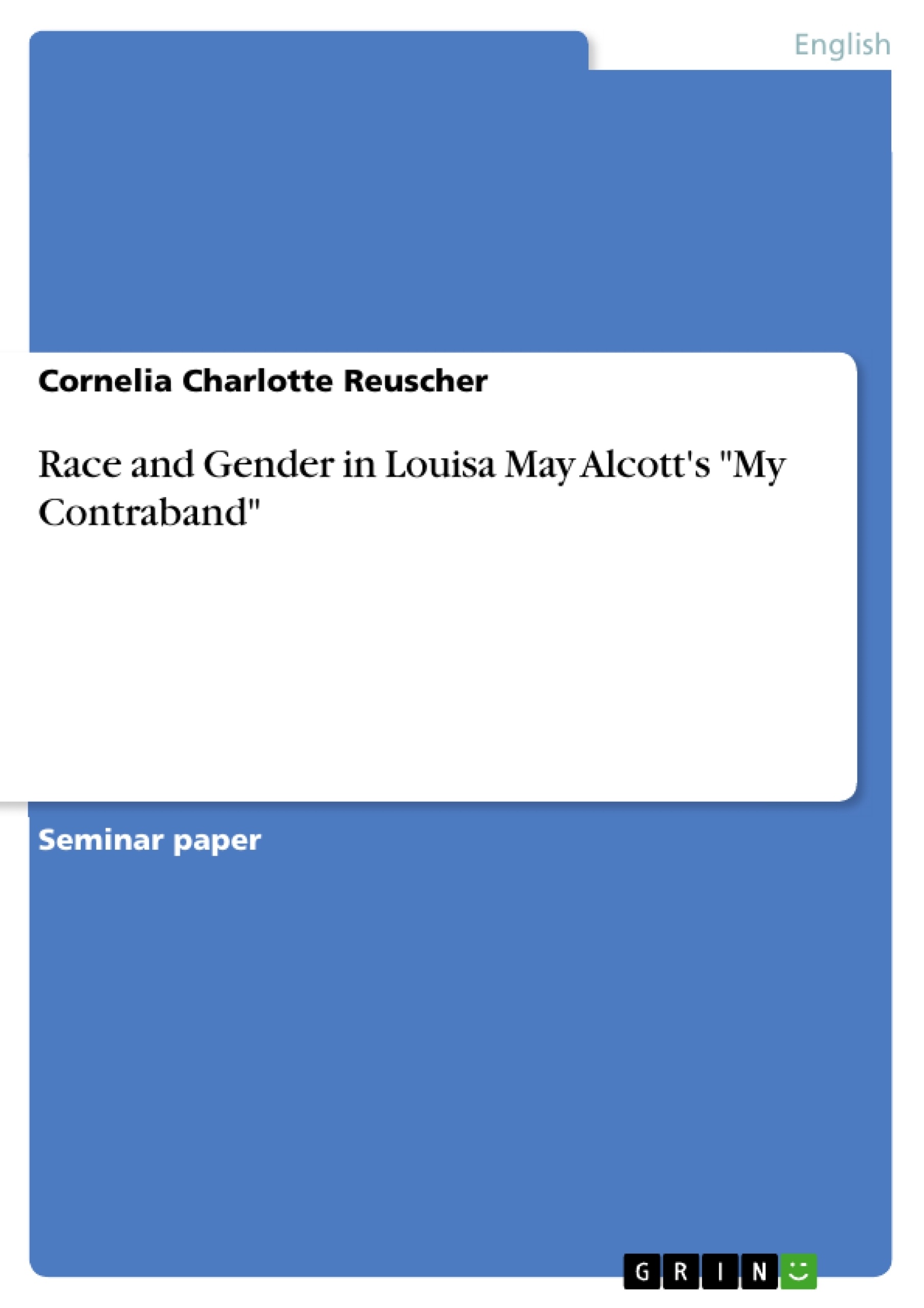1. Introduction
Louisa May Alcott is one of the best known American female writers of the 19th Century. Her work primarily dealt with the role of women in society, accompanied by other topics such as work and the issue of slavery. The short story “My Contraband”, first published in 1863 under the title “The Brothers”, depicts both gender and racial issues. Set in the sphere of the Civil war and war hospitals, it is the story of the encounter of a white nurse and a mulatto contraband. Throughout the plot, Alcott paints a fascinating and dense picture of female desire and the fascination emanating from the mulatto. Though no explicit sexual action happens between the two, there are many hints at a strong erotic desire on the nurse’s part.
This paper will investigate the way in which this mulatto is described, in which way this is linked to the forbidden desire of the white nurse and what her strategies are to make this desire less a taboo. My assumption here is that the nurse has to somehow “whiten” the contraband in order to make her desire more explicable and at least a little more “legal”.
To prove this thesis, I will begin with a short overview of the historical background against which the story is set. In the following chapter, after a synopsis of the story itself, I will firstly take a closer look at the introduction of the contraband, secondly at the description of the nurse and investigate in how far racial stereotypes are introduced and used and, in the description of the woman, in how far she does or does not correspond to the ideal of womanhood in the 19th century. Concluding, I will describe the tabooed relationship between the two and the woman’s strategy to deal with her desire.
[...]
Table of Contents
- Introduction
- Historical Background: Slavery, Abolitionism and the Civil War
- Construction of Race and Gender in "My Contraband"
- Description and development of the contraband
- Description and development of Nurse Dane
- Summary
- Literature
Objectives and Key Themes
The paper aims to examine the portrayal of race and gender in Louisa May Alcott's short story "My Contraband". It explores how Alcott depicts the forbidden desire of a white nurse for a mulatto contraband during the Civil War. The paper investigates the strategies employed by the nurse to make her desire less taboo, particularly through the "whitening" of the contraband.
- The representation of race and gender in 19th-century American literature
- The role of slavery and abolitionism in the context of the Civil War
- The construction of racial and gender stereotypes in "My Contraband"
- The portrayal of female desire and its social constraints
- The impact of the historical context on the story's themes and characters
Chapter Summaries
The introduction sets the stage for the analysis, highlighting the importance of Louisa May Alcott's work in exploring women's roles and societal issues, including slavery. It introduces the short story "My Contraband" and its depiction of gender and racial conflicts within the backdrop of the Civil War. The paper focuses on examining the nurse's fascination with the mulatto contraband and her strategies to navigate the taboo nature of her desire.
The second chapter provides historical context, outlining the significance of the period from 1810 to 1870 in shaping American society. It discusses the emergence of concepts like women's and racial equality, the impact of the Civil War on the issue of slavery, and the rise of the Abolitionist Movement. It also touches upon the changing perspectives on women's roles and the development of the "Cult of True Womanhood" and its subsequent challenges.
The third chapter delves into the construction of race and gender within the story. It introduces the key characters, Nurse Dane and the mulatto contraband, and their encounter in a war hospital. The chapter explores the narrative structure and the blending of sentimental and gothic literary elements to evoke strong emotional responses from the reader. It also foreshadows the themes of forbidden desire, social constraints, and the nurse's strategies to manage her attraction to the contraband.
The chapter then focuses on the description and development of the contraband as seen through the eyes of Nurse Dane. It analyzes how the contraband is portrayed and the way his appearance and actions are interpreted by the nurse, hinting at the potential for a more complex relationship.
Keywords
The primary keywords and focus topics of the text include race, gender, slavery, abolitionism, Civil War, "My Contraband", Louisa May Alcott, female desire, social constraints, racial stereotypes, sentimental literature, gothic literature, and "True Womanhood". These terms encapsulate the core themes and concepts explored in the paper, particularly the intersection of race, gender, and social norms in the context of 19th-century American society.
- Quote paper
- Cornelia Charlotte Reuscher (Author), 2006, Race and Gender in Louisa May Alcott's "My Contraband", Munich, GRIN Verlag, https://www.grin.com/document/60172



